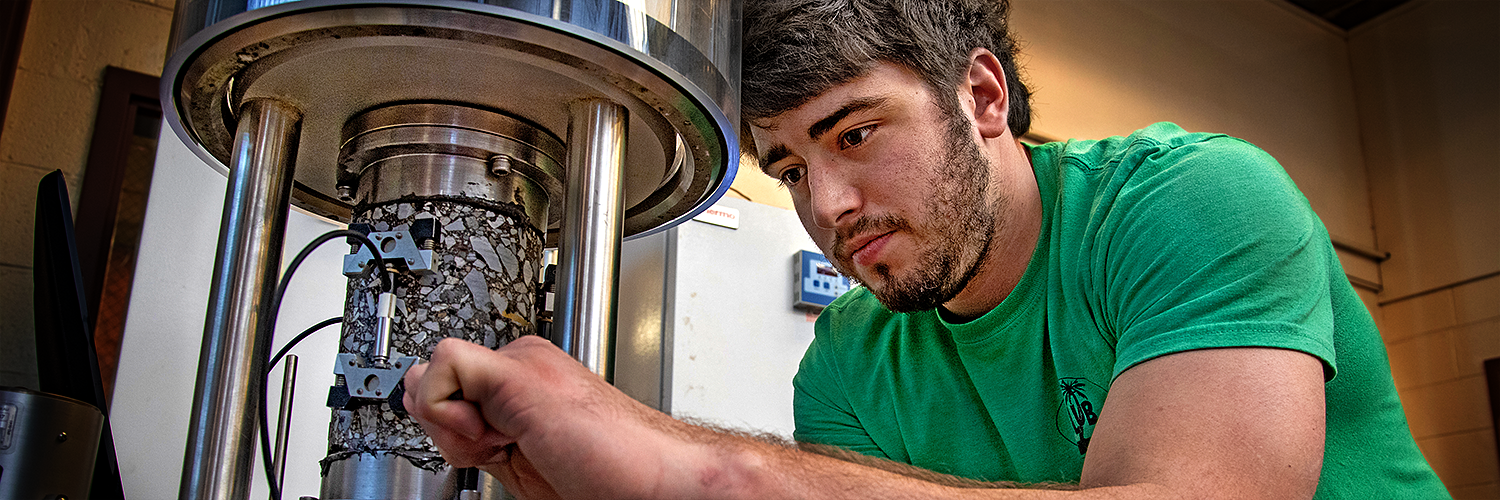
About
We Bring Innovation to Transportation
About VTRC
'We Bring Innovation to Transportation'
For over 75 years—under various names—the Virginia Transportation Research Council (VTRC), the research arm of the Virginia Department of Transportation (VDOT), has been at the forefront of transportation innovation both in Virginia and across the nation.
As VDOT’s responsibilities and the transportation field have grown increasingly complex, VTRC’s research program has dynamically adapted. It continually identifies, evaluates, and studies cutting-edge technologies and best practices. From pilot testing to implementation support, VTRC helps VDOT integrate the most advanced solutions available—always with the goal of enhancing mobility, safety, and service for Virginia’s traveling public.
VTRC is:
- One of the nation’s leading transportation research centers, specializing in applied research and technical consulting to support VDOT, its primary customer.
- Responsible for all research at VDOT.
- A joint venture of VDOT and the University of Virginia (UVA) established in 1948.
- Located in Charlottesville, Va., adjacent to UVA for the mutual benefit of VDOT and UVA.
- A provider of technical consulting to VDOT field offices to solve problems.
- A source of training of future transportation professionals through its collaborations with UVA and other Virginia universities.
VTRC is organized into 6 technical teams and an administrative team. Click on each team name in the list to the right to learn more about their major areas of inquiry (or function).
VTRC Teams
Learn more about VTRC
VTRC is funded primarily by VDOT and the Federal Highway Administration (FHWA) through State Planning & Research (SP&R) funds. These funds support research, development, and technology transfer activities related to the planning, design, construction, and maintenance of highway, public transportation, and intermodal transportation systems.
The administration and use of SP&R research funds are governed by 23 CFR 420 and 2 CFR 200, which establish the regulatory framework for managing the SP&R-funded portion of VTRC’s research program.
VTRC was created through a Joint Agreement between VDOT and the University of Virginia (UVA), first executed on November 1, 1948, and later revised on January 1, 1966; January 1, 1975; October 7, 1997; and August 5, 2004. The agreement defines VTRC’s name and location, outlines the responsibilities of each party, addresses staffing and resources, and specifies how the agreement may be amended.
Under the Joint Agreement, VTRC staff have access to nearly all of UVA’s library, laboratory, computing, and other facilities. VDOT provides funding, personnel, and equipment to support an extensive research program at VTRC, and these facilities may also be used by UVA in support of its educational mission.
Research Advisory Committees (RACs) are a core and long-standing element of VTRC’s research program. Current RACs focus on areas such as structures and bridges; concrete and asphalt materials; environmental, cultural, and historical preservation; pavements; system operations; traffic and safety; and transportation planning.
RACs serve multiple purposes: they act as a forum for new research ideas, help prioritize research needs, and—because they include many of the sponsors’ administrators and decision makers—provide a direct link to those best positioned to implement research findings.
Functions
RACs advise the Director of Research and VTRC staff on the content and direction of research in their technical areas. This involves developing and ranking research need statements, providing technical guidance during studies, and supporting the implementation of results.
Membership
Each RAC is composed of VDOT management and operational staff, representatives from other state agencies, FHWA technical specialists, and selected members from local governments and MPOs. Representatives from transportation-related trade associations (“Friends of the RAC”) may attend meetings and serve as non-voting corresponding members, receiving notices and minutes. VTRC staff participate in meetings but are not eligible for membership.
Meetings
RACs generally meet twice a year—spring and fall—though frequency may vary. Fall meetings usually focus on selecting potential projects for the upcoming fiscal year’s Work Program, while spring meetings review ongoing projects and recent study results. Joint sessions may be held when RAC scopes overlap.
Responsibilities
RAC meetings are intended to be informal, encouraging open discussion between members and research staff. Standard practices include maintaining an agenda, prioritizing research projects, reviewing implementation progress, and drafting new research need statements. RACs also assist in identifying members for the Technical Review Panel overseeing each project.
Last updated: December 10, 2025

